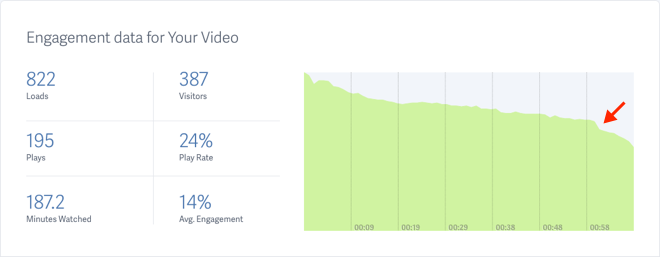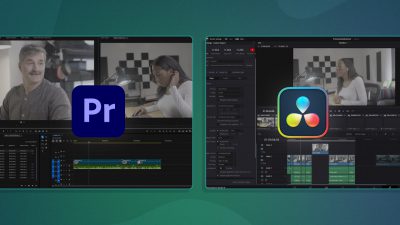Creativity is annoyingly fickle. Whether it’s lacking inspiration, or a bad case of writer’s block, sometimes it takes more energy to start a video project than it does to film or edit it.
Overcome this all-too-common obstacle to cranking out video with a simple solution: a reliable recipe you can use again and again for different videos. Here’s how to build a durable formula for success with online video.
Why Formulas Work
Formulas are to video like habits are to lifestyle. If you can establish healthy habits, you’ll find it easier to get enough exercise and eat right. Similarly, you’ll find it easier to make more videos if you have an established pattern you can follow for the end result.
If you think about it, formulas are everywhere with video. Popular TV shows like Law and Order and The Daily Show unfold in highly predictable segments in each episode. They vary only in terms of plot details.
People like predictability. Our brains are designed to pick out patterns because it enables us to process information more efficiently. When it comes to video, this has the advantage of drawing viewers in. People more willing to commit to watching something if the experience is predictable because they can assume it will be worth it.
Even famous directors and producers rely on formulas. Take the recent perfume ad for Kenzo from Spike Jonze, which has been widely shared and lauded for its skewering of more typically irreverent beauty product ads.
Not only is it highly entertaining, it’s also extremely similar to another super successful music video he made. Remember Fat Boy Slim’s 90s hit “Weapon of Choice”?
In both videos, an unexpected protagonist suddenly bursts into dance and sashays through an ornate building. Some details are different, but the formula is clearly the same.
Understanding What Works
To come up with a formula that will work for your project, you first have to know what works. Then, figure out how to apply it to your specific use-case.
It doesn’t matter if you haven’t made a video before. You can still research what’s working by searching for similar content online. Identify videos that get widely shared, liked or favorited.
If your goals aren’t specifically about the reach of your content, rely on your gut for what you want your video to be like, but still check for successful examples. This will help solidify your vision and establish a reliable formula.
All details matter. You’re looking for patterns you can replicate in your own videos that will help establish your formula and take the guesswork out of assembling your videos.
For instance, note the length of the video, the types of camera angles, the music, the transitions between edits, the voiceover or subjects, the use of lower thirds or text, and where the content was being shared. If possible, look at why viewers seem to be reacting to the video, and are willing to share it.
The end result of all this research should be a basic format for your videos you can stick to for a variety of content. For example, you might decide that a minute and a half is the max length, and your videos will start with a strong hook in the first 6 seconds featuring the subject of the video, followed by b-roll and voiceover to go deeper into the plot, finishing with the subject on camera again to deliver the closing statements.
Draft a Storyboard
Different camera angles and cuts between scenes can impart different meanings to viewers. For instance, emotionally charged scenes feature lots of close-ups, while slow panning shots are used to establish a scene.
Creating a storyboard for your formula is a great way to visualize the final product and plan your video. A storyboard is a simplified representation of the different scenes that will be unfolding in your video. It also enables you to list your shots, time your music, and ultimately, assemble your video more efficiently. Here is a great, in-depth explanation of what storyboards are and how they can be used from our friends at Vyond.
Although storyboards are usually created for specific videos, the idea here is to layout the general format of your videos. That way, you can reuse this storyboard again and again as a template for different content. Think of it as a visual representation of the building blocks of your videos.
If you’re unsure of what it should look like, or how to get started, this detailed guide from WikiHow walks you through the process of creating your storyboard.
Stick to the Script
Once you’ve established the building blocks of your video, tweak your content so it slots easily into the different segments. The idea is that for each new video, you should already know the different components required. This might be as straightforward as intro, climax, conclusion, or much more complex.
Writing out scripts is key to ensuring you don’t stray from your formula. Once you’ve gone through this process once or twice, you’ll start to gain efficiency from the patterns established in your writing.
Use Simple Setups
Visual consistency in video is as important as the script or music. It reinforces your brand, and helps viewers anticipate what comes next. Also, you’re less likely to make a mistake if you’re using the same setup repeatedly.
For example, creating an at-home or in-office studio with basic lighting and a simple back drop will enable you to quickly and easily jump in front of the camera when needed. By removing barriers to the creative process, you’ll find it’s less intimidating to make videos on a regular basis.
An added bonus is the efficiency gained from the editing process. If you know when you’re using a wide angle shot, or a close up from an interview, you can drop the clips right where they belong. Read this blog post for more filming tips for easier editing.
Recipe for Success
After all this preparation, you should have a formula you can use repeatedly to create great content. Of course, you’ll want to check that it’s working by using video analytics and engagement data to see how viewers are interacting with your videos. There might be additional metrics that matter to you, like the number of clicks on a post-play screen, product purchases, or traffic to a signup page.
Metrics to check include the play rate of the video, which indicates how many visitors to the webpage containing your video decided to watch it. From there, you’d ideally want to see how much they watched, rewatched or skipped of your video. This information is indicated by video engagement heat-maps. You can use this information to check for any drop-off points in your video.
Engagement metrics are important to check because they can indicate a potential issue with your formula. They can also help pinpoint segments viewers found particularly interesting. For instance, you can see a slight drop off in engagement where the red arrow indicates in this sample data:

Based on that, you’d probably want to revise the closing segment of your video, if possible.
To track traffic your video is sending to a page, signups, or other secondary goals, you can use free traffic tracking tools like Google Analytics, and add UTM parameters to the URLs you are using in your post-play screen.
Using these data points, you should be able to tweak your video template to improve your results over time.
Do you stick to a formula for your videos? We’d love to hear about your experiences. Let us know how it works for you in the comments below!








